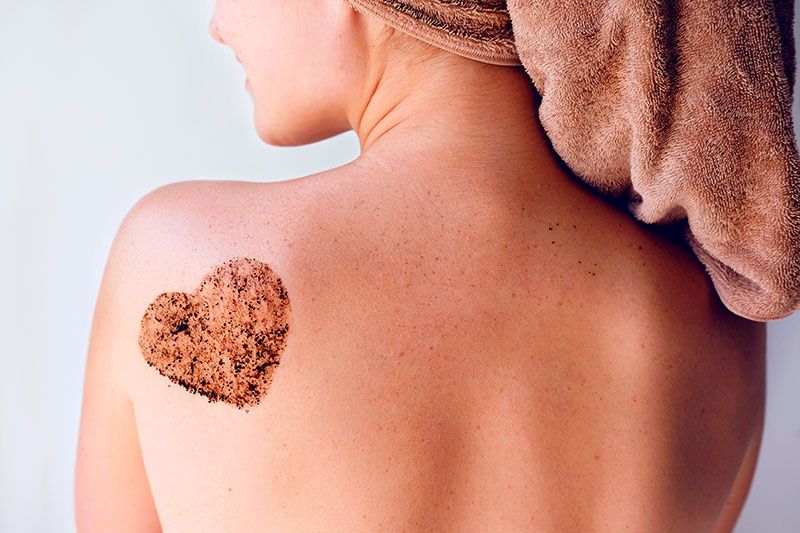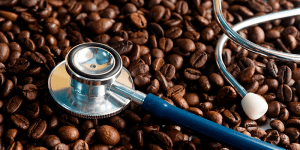El efecto protector del consumo de café en el riesgo de melanoma cutáneo y el rol de los polimorfismos GSTM1 y GSTT1.
27-04-2017
Este estudio de casos y controles llevado a cabo en el área de hospitalización de un centro de salud en Roma, Italia, examinó la asociación entre el consumo de café, el melanoma cutáneo y los polimorfismos GSTM1 y GSTT1. El estudio contó con 304 casos (pacientes con melanoma) y 305 controles (pacientes sanos). Se recolectó información sobre las características socio-demográficas de cada uno de los participantes, historia médica, exposición al sol, características pigmentarías y dieta, y se empleó regresión logística para estimar los OR y los IC. Después de ajustar por sexo, edad, educación, color de pelo, lunares comunes, fototipo de la piel y episodios de quemaduras de piel en la infancia, los resultados evidenciaron que una alta frecuencia de consumo de café (más de una vez al día), comparada con una baja frecuencia (siete o menos veces a la semana), es factor protector contra el melanoma cutáneo (OR 0,46; IC 95 % 0,31-0,68). Cuando se estratificó por los genotipos GSTM1 y GSTT1, el efecto protector del café fue extremadamente alto para los sujetos sin ninguno de los dos polimorfismos (OR 0,01; IC 95 % 0,0003-0,54). Los investigadores concluyeron que el consumo de café protege contra el melanoma, particularmente a aquellos con deleción homocigota de GSTM1 y GSTT1.
1. De Vries E, Coebergh JW (2005) Melanoma incidence has risen in Europe. BMJ 331(7518):698
2. Gandini S, Sera F, Cattaruzza MS et al (2005) Meta-analysis of risk factors for cutaneous melanoma: II. Sun exposure. Eur J Cancer 4:45–60
3. Curtin JA, Fridlyand J, Kageshita T et al (2005) Distinct sets of genetic alterations in melanoma. N Engl J Med 353:2135–2147
4. Fortes C, de Vries E (2008) Nonsolar occupational risk factors for cutaneous melanoma. Int J Dermatol 47:319–328
5. International Agency for Research on Cancer (1991) IARC Mongraph on the evaluation of the carcinogenic risks to humans. In: Coffee, tea, mate, methylxanthines and methylglyoxal, vol 51. IARC, Lyon, France
6. Je Y, Giovannucci E (2012) Coffee consumption and risk of endometrial cancer: findings from a large up-to-date meta-anal- ysis. Int J Cancer 7:1700–1710
7. Galeone C, Turati F, La Vecchia C et al (2010) Coffee con- sumption and risk of colorectal cancer: a meta-analysis of case- control. Cancer Causes Control 2:1949–1959
8. Turati F, Galeone C, Edefonti V et al (2012) A meta-analysis of coffee consumption and pancreatic cancer. Ann Oncol 2:311–318
9. Braem MG, Onland-Moret NC, Schouten LJ et al (2012) Coffee and tea consumption and the risk of ovarian cancer: a prospective cohort study and updated meta-analysis. Am J Clin Nutr 95:1172–1181
10. Veierød MB, Thelle DS, Laake P (1997) Diet and risk of cuta-neous malignant melanoma: a prospective study of 50,757 Nor- wegian men and women. Int J Cancer 71:600–604
11. Osterlind A, Tucker MA, Stone BJ et al (1988) The Danish case- control study of cutaneous malignant melanoma. IV. No associ- ation with nutritional factors, alcohol, smoking or hair dyes. Int J Cancer 42:825–828
12. Green A, Bain C, McLennan R et al (1986) Risk factors for cutaneous melanoma in Queensland. Rec Results Cancer Res 102:76–97
13. Naldi L, Gallus S, Tavani A et al (2004) Oncology Study Group of the Italian Group for Epidemiologic Research in Dermatology. Risk of melanoma and vitamin A coffee and alcohol: a case- control study from Italy. Eur J Cancer Prev 13:503–508
14. Dong LM, Potter JD, White E et al (2008) Genetic susceptibility to cancer: the role of polymorphisms in candidate genes. JAMA 299:2423–2436
15. Parl FF (2005) Glutathione S-transferase genotypes and cancer risk. Cancer Lett 221:123–129
16. Huber WW, Parzefall W (2005) Modification of N-acetyltrans- ferases and glutathione S-transferases by coffee components: possible relevance for cancer risk. Methods Enzymol 401:307–341
17. English DR, Mac Lennan R (1990) Epidemiological studies of melanocytic naevi protocol for identifying and recording naevi. IARC internal report no 90/002. International Agency for Research on Cancer, Lyon
18. Freedberg IM et al (eds) (1999) Fitzpatrick’s dermatology in general medicine, 5th edn. McGraw-Hill, New York
19. Leffondre ́ K, Abrahamowicz M, Siemiatycki J et al (2002) Modeling smoking history: a comparison of different approaches. Am J Epidemiol 156:813–823
20. Fortes C, Forastiere F, Farchi S et al (2003) The protective effect of the Mediterranean diet on lung cancer. Nutr Cancer 46:30–37
21. Gao Y, Zhang Q (1999) Polimorphisms of the GSTM1 and CYP2D6 genes associated with susceptibility to lung cancer in Chinese. Mutat Res 444:441–449
22. Fortes C, Mastroeni S, Melchi F et al (2007) The association between residential pesticide use and cutaneous melanoma. Eur J Cancer 43:1066–1075
23. Denkert C, Kobel M, Berger S et al (2001) Expression of cyclooxygenase 2 in human malignant melanoma. Cancer Res 61:303–308
24. Tabolacci C, Lentini A, Provenzano B et al (2010) Similar antineoplastic effects of nimesulide, a selective COX-2 inhibitor, and prostaglandin E1 on B16-F10 murine melanoma cells. Mel- anoma Res 20:273–279
25. Kang NJ, Lee KW, Shin BJ et al (2009) Caffeic acid, a phenolic phytochemical in coffee, directly inhibits Fyn kinase activity and UVB-induced COX-2 expression. Carcinogenesis 30:321–330
26. Lee WJ, Zhu BT (2006) Inhibition of DNA methylation by caf- feic acid and chlorogenic acid, two common catechol-containing coffee polyphenols. Carcinogenesis 27:269–277
27. Lee KJ, Jeong HG (2007) Protective effects of kahweol and cafestol against hydrogen peroxide-induced oxidative stress and DNA damage. Toxicol Lett 173:80–87
28. Yamada Y, Yasui H, Sakurai H (2006) Suppressive effect of caffeic acid and its derivatives on the generation of UVA-induced reactive oxygen species in the skin of hairless mice and phar- macokinetic analysis on organ distribution of caffeic acid in ddY mice. Photochem Photobiol 82:1668–1676
29. Armstrong BK, White E, Saracci R (1992) Principles of exposure measurement in epidemiology. Oxford University Press, New York 30. Lampe JW (2009) Interindividual differences in response to plant-based diets: implications for cancer risk. Am J Clin Nutr 89:1553S–1557S
30. Mo ̈ssner R, Anders N, Ko ̈nig IR et al (2007) Variations of the melanocortin-1 receptor and the glutathione-S transferase T1 and M1 genes in cutaneous malignant melanoma. Arch Dermatol Res 298:371–379
31. Chan EC, Lam SY, Fu KH et al (2005) Polymorphisms of the GSTM1, GSTP1, MPO, XRCC1, and NQO1 genes in Chinese patients with non-small cell lung cancers: relationship with aberrant promoter methylation of the CDKN2A and RARB genes. Cancer Genet Cytogenet 162:10–20
32. Ibarrola-Villava M, Martin-Gonzalez M, Lazaro P et al (2012) Role of glutathione S-transferases in melanoma susceptibility: association with GSTP1 rs1695 polymorphism. Br J Dermatol 166:1176–1183
33. Heagerty A, Smith A, English J et al (1994) Glutathione S-transferase GSTM1 phenotypes and protection against cutane- ous tumours. Lancet 343:266–268
34. Kanetsky PA, Holmes R, Walker A et al (2001) Interaction of glutathione S-transferase M1 and T1 genotypes and malignant melanoma. Cancer Epidemiol Biomark Prev 10:509–513
35. Fortes C, Mastroeni S, Boffetta P et al (2011) Polymorphisms of GSTM1 and GSTT1, sun exposure and the risk of melanoma: a case–control study. Acta Derm Venereol 91:284–289
36. Palli D, Masala G, Peluso M et al (2004) The effects of diet on DNA bulky adduct levels are strongly modified by GSTM1 genotype: a study on 634 subjects. Carcinogenesis 25:577–584
37. Lampe JW, Chen C, Li S et al (2000) Modulation of human glutathione S-transferases by botanically defined vegetable diets. Cancer Epidemiol Biomarkers Prev 9:787–793
38. Epplein M, Wilkens LR, Tiirikainen M et al (2009) Urinary isothiocyanates; glutathione S-transferase M1, T1, and P1 poly- morphisms; and risk of colorectal cancer: the Multiethnic Cohort Study. Cancer Epidemiol Biomarkers Prev 18:314–320
39. Gervasini G, San Jose C, Carrillo JA et al (2010) GST poly- morphisms interact with dietary factors to modulate lung cancer risk: study in a high-incidence area. Nutr Cancer 62:750–758
40. Borst L, Buchard A, Rosthøj S et al (2012) Gene dose effects of GSTM1, GSTT1 and GSTP1 polymorphisms on outcome in childhood acute lymphoblastic leukemia. J Pediatr Hematol Oncol 34:38–42
41. Coles BF, Kadlubar FF (2003) Detoxification of electrophilic compounds by glutathione S-transferase catalysis:determinants of individual response to chemical carcinogens and chemothera- peutic drugs. BioFactors 17:115–130















